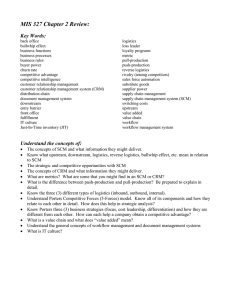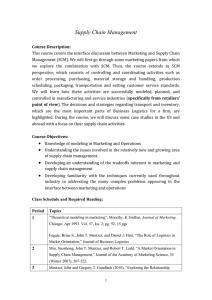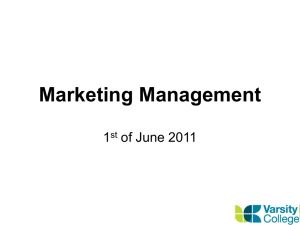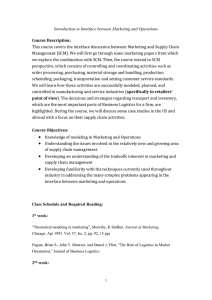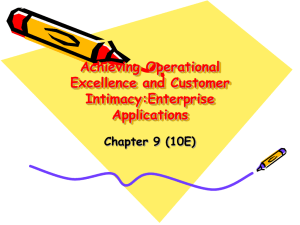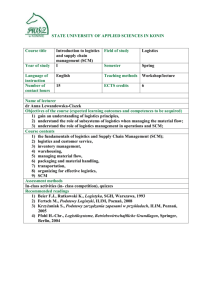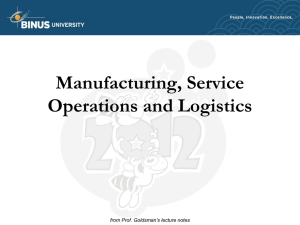File
advertisement
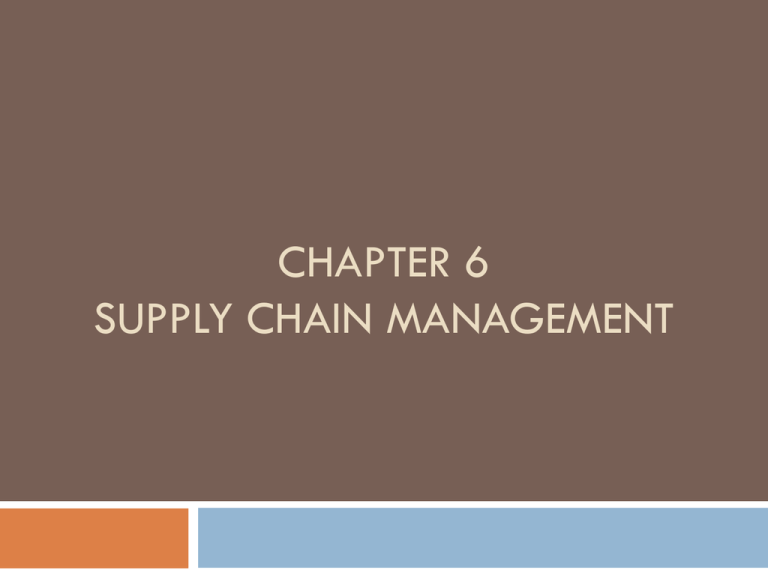
CHAPTER 6 SUPPLY CHAIN MANAGEMENT SCM – some definitions Supply chain management (SCM) The coordination of all supply activities of an organization from its suppliers and partners to its customers Upstream supply chain Transactions between an organization and its suppliers and intermediaries, equivalent to buy-side ecommerce Downstream supply chain Transactions between an organization and its customers and intermediaries, equivalent to sell-side e-commerce. Members of the supply chain: (a) simplified view, (b) including intermediaries A simple model of supply chain Acquisition of resources (inputs) Transformation (process) Products and services (outputs) What is logistics? Used to refer specifically to the management of logistics or inbound and outbound logistics Inbound logistics: The management of material resources entering an organization from its suppliers and other partners Outbound logistics: The management of material resources supplied from an organization to its customers and intermediaries Push and pull supply chain models Push and pull approaches to supply chain management The Value Chain A model that considers how supply chain activities can add value to products and services to be delivered to the customer Restructuring the internal value chain Some weaknesses in the traditional value chain: Most applicable to manufacturing of physical products It is a one-way chain involved with pushing products to the customer Does not emphasise the importance of value networks Deise et al. (2000) adapted a new model Two alternative models of the value chain: (a) traditional value chain model, (b) revised value chain model Towards virtual organization An organization which uses information and communication technology to allow it to operate without clearly defined physical boundaries between different functions Lack of physical structure Reliance of knowledge Use of communications technology Mobile work Boundaryless and inclusive Flexible and responsive Options for restructuring the supply chain The characteristics of vertical integration, vertical disintegration and virtual integration Benefits of applying IS to SCM Increased efficiency of individual processes Benefit: reduced cycle time and cost per order as described in Chapter 7 Reduced complexity of the supply chain Benefit: reduced cost of channel distribution and sale Improved data integration between elements of the supply chain Benefit: reduced cost of paper processing Reduced cost through outsourcing Benefits: lower costs through price competition and reduced spend on manufacturing capacity and holding capacity. Better service quality through contractual arrangements? Innovation Benefit: better customer responsiveness. IS-supported upstream SCM RFID (radio-frequency identification microchip) Microchip-based electronic tags are monitoring anything they are attached to used for IS-supported downstream SCM Involves selling direct to customers Operating a strategy of disintermediation by reducing the role of its branches Alternative strategies for modification of the e-business supply chain
